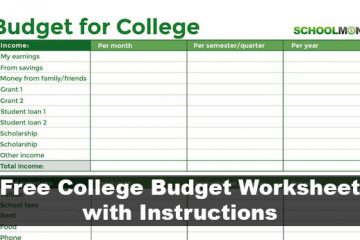Federal vs. Private Student Loans: What to Know
So you’ve been accepted to a college or university, you’ve completed and filed the FAFSA, and now you’re looking at your financial aid package and trying to figure out the best decisions to make in order to fund your education. You’ve determined that you’ll need to take out student loans to fully cover college expenses, but you have the option to take out federal and private loans.
What’s the right choice? Is there an advantage to taking out one kind of loan over the other? If all these financial aid decisions are giving you a headache, you’re not alone – it can be one of the most confusing aspects of the college financial planning process.
Before you accept any student loans, be sure to know what you’re getting yourself into. Here is a closer look at the difference between federal and private student loans.
Federal and private loans defined
Federal student loans are loans that the federal government offers in order to help students cover the costs associated with earning a college degree.
The types of federal loans you will typically come across in your financial aid package are:
- Direct Subsidized and Unsubsidized Loans
- Direct PLUS Loans
- Federal Perkins Loans
Private student loans are loans that are funded by non-federal agencies such as banks, credit unions, organizations, and schools.
Eligibility
Eligibility is determined by different factors for federal and private student loans. With federal student loans, the amount and type of loan for which you are eligible is based upon financial need. On the other hand, private loans are typically based on your credit score, and the amount you can withdraw is not limited.
Loan interest
There are many differences in the way that interest is handled by federal and private student loans. Here are some of the main differences:
- Federal student loans do not require payment on interest while you are still in school, while many private student loans do.
- There are financial need-based subsidized federal student loans available where the interest accrued during school is paid by the government. With private loans, the borrower is always liable for interest accrued.
- Federal student loans have fixed interest rates that are often lower than private student loans. Many private student loans have variable interest rates that can go up, therefore increasing the total amount you will pay in the long run.
- Interest paid under federal loans is always tax deductible. In some cases, private loan interest is not.
Paying them back
Federal and private loans have different repayment terms and conditions, which will greatly impact your finances in both the short- and long-term. Here are a few of the biggest differences to consider:
- Federal loan payments are always deferred until after graduation, whereas many private loans require payments while you are still in school.
- There are several options for federal loan repayment, including extended, graduated, and income-based. Private loans often do not offer multiple repayment options, and extended repayment options are usually limited to 20-25 years at the most.
- Under worst-case circumstances, if you are having trouble repaying your loans, you may be able to defer or change your repayment plan to lower your monthly payments with federal loans. This is rarely the case with private loans.
- If you decide you would like to pay off your student loans early, you may be stuck with a prepayment penalty fee if you are paying off a private loan. Conversely, there is no prepayment penalty fee for federal loans.
Loan forgiveness
One potential perk to using federal over private loans is the possibility to apply for partial loan forgiveness under certain federal and state government programs. Here is a brief look at some of the student loan forgiveness programs that exist which federal student loan borrows can take advantage of:
- The Public Student Loan Forgiveness (PSLF) program is designated for full-time employees of the public service industry (e.g. state, local, or federal government agencies), and forgives the remaining outstanding balance of eligible federal student loans after 120 qualifying monthly payments have been made.
- Under the Teacher Loan Forgiveness program, full-time teachers who have taught for five consecutive years in low-income elementary and secondary schools are eligible for forgiveness of up to $17,000 in federal student loans.
- Also, government-run volunteer programs such as Peace Corps offer partial student loan cancellation incentives following completion of volunteer service.
What’s right for you?
For the most part, there is a clear advantage for taking out federal rather than private loans. However, in the end, you have to look at your own situation in order to determine which loan is right for you. For example, federal loans may not cover the entire cost of your college expenses, so a private loan might make most sense.
In sum, it’s best to be educated on any financial decision you make in college, and student loans are no exception – know what you’re getting yourself into to avoid any regrets when it comes time to actually pay your loans back.
Have any advice for current or future students about student loans or have a question yourself? Feel free to post a comment below!
Photo credit: CollegeDegrees360




